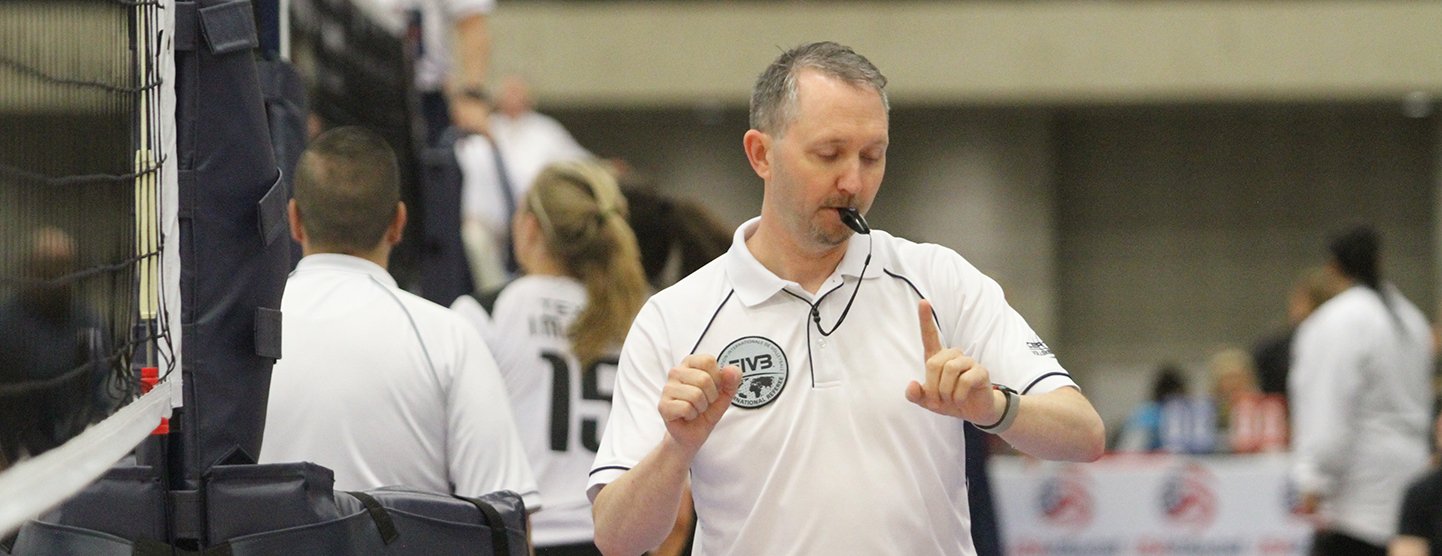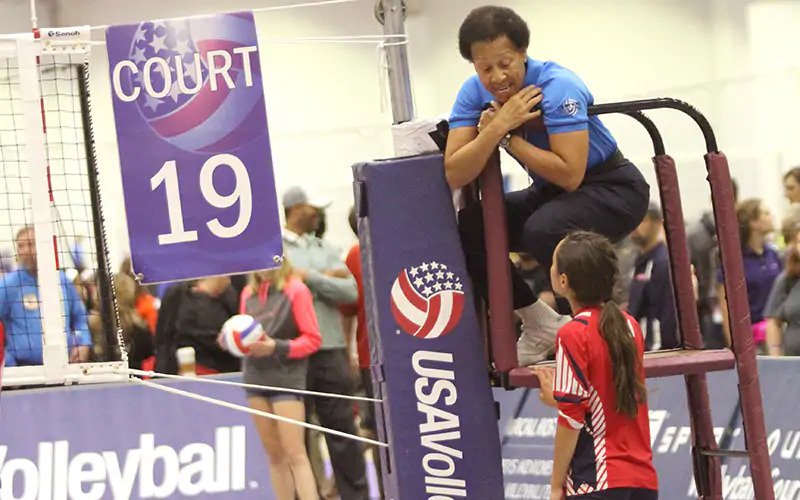
A new USAV season is underway, and we have a new rulebook and many rule changes. Contact your region for a new rulebook or download your own copy. Here are some highlights and points of emphasis.
Scenario One
A referee observes a junior player wearing small stud earrings during warmups. They ask the player to remove the jewelry and tell the player it’s not allowed in junior competition.
Answer One
Incorrect
This is a big rule change for this season: juniors may now wear jewelry. This does not give them the right to wear anything they want. We must still be scanning for jewelry that could be dangerous to them or their teammates. Small stud earrings, inner-ear piercings, string bracelets with nothing else on them, soft medical condition bracelets (like the original LiveStrong bracelets), etc. may all be worn at the players’ risk. Let’s still be aware of what they are wearing. Clubs may have a policy that says their players will not wear jewelry.
Scenario Two
A team’s uniform consists of a jersey and spandex shorts. Two players on the team have pants that go down below their knee. The referees tell the team they must all be in shorts or must all be in pants to be legal.
Answer 2:
Correct
Another modified rule is that teams may wear pants instead of shorts (see the 2020 Critical Rules interpretation for more detail). Essentially, they may wear pants – anything below the knee – but all must be the same. Teams cannot wear a mix of shorts and pants without a waiver from the USAV Indoor Rules Interpreter. Manufacturer logo language still applies and undergarment language is still the same.
Scenario Three
An 18s team sends their captain to the R1 and wants to protest an application of the rule. The R1 accepts the protest and goes through the proper procedure to assemble the protest committee. When the team starts to tell the protest committee what they are protesting, the coach starts to speak instead of the captain. The protest committee tells the coach that the captain may only speak.
Answer Three
Incorrect
Coaches may now act as the captain at all levels. In the past, we allowed coaches to help their captain in protest situations if the age division was 14 or younger. Now we will allow a head coach to help in protest or potential protest situations at any age level. They may still be sanctioned if they are being unsportsmanlike, and anyone, including someone on the bench, may be carded at the conclusion of a protest procedure if warranted. This does not give a head coach the right to walk across the court; they must send a captain first. If the captain is not clear, the R1 may get off the stand and go talk to the coach at their bench. Only the R1 may accept or deny a protest.
Scenario Four
Team A attacks the ball and as a Team B player ducks to avoid it, their long ponytail hits the ball before the ball lands out of bounds. The referees call a touch on the Team B player.
Answer Four
Incorrect
It is not a fault for a player’s loose hair to contact the ball or the net. The closer the ball comes to the head, the less loose the hair becomes and the more potential for a touch occurs. If we truly see it as only touching loose hair, we should not be calling a touch.
Scenario Five
A player on Team A jumps to block the ball. As they are landing, their jersey touches the net. The referee calls a net fault on the player.
Answer Five
Correct
This is not new; the uniform is considered part of the body. If the uniform touches the net during the action of playing the ball, it is a net fault. The art of officiating may allow us to ignore a very small touch of the net by a uniform, but the team cannot argue the amount of the touch if a net fault is called.
Scenario Six
During a rally, the line judge sees a player contact the antenna during their blocking action. The line judge immediately waves their flag and points at the antenna.
Answer Six
Correct
Line judges are now able to call a player contacting the antenna during the action of play.
This is treated like any other potential situation during a rally. If the play is near the antenna and you see them signal an antenna fault but are not sure what they are calling, you can acknowledge you saw them but let play continue. Or, if you know something hit the antenna but are not sure what, you can immediately whistle to end the rally then get confirmation on what the line judge was signaling. This will depend on how confident you are in your line judges or how experienced your line judges are. You can always call them over after the rally is finished or choose to disagree and overrule if you think they missed the call. Make sure you collect all information before making final decision.
Interpretation One
Team A player attacks the ball near the antenna. Team B touches (blocks) the ball at the same time as the ball contacts the antenna.Ruling One
Attack hit fault on Team A. The blocker did nothing wrong. Even though they were touching the ball at the same time the ball contacted the antenna, the ball would have hit the antenna anyway. This is for simultaneous contact only. If the ball clearly contacts the blocker first then hits the antenna, it would be a fault on the blocker.
I hope everyone has a great season. Questions? Email [email protected].
Bill Stanley
USAV Indoor Rules Interpreter


